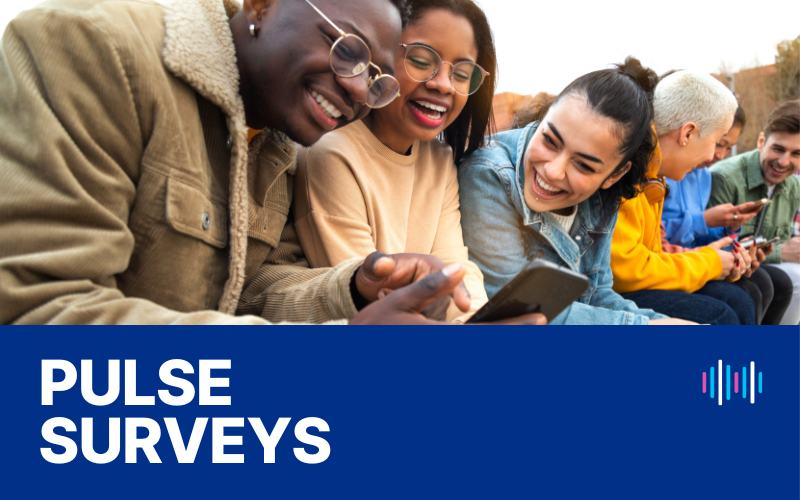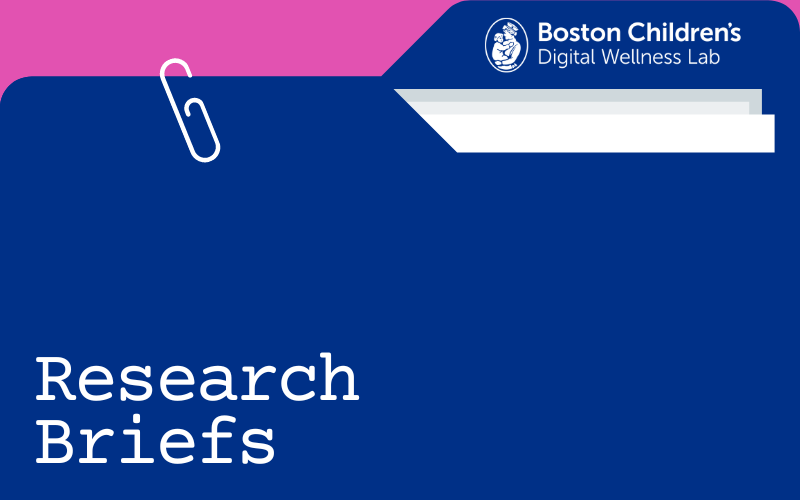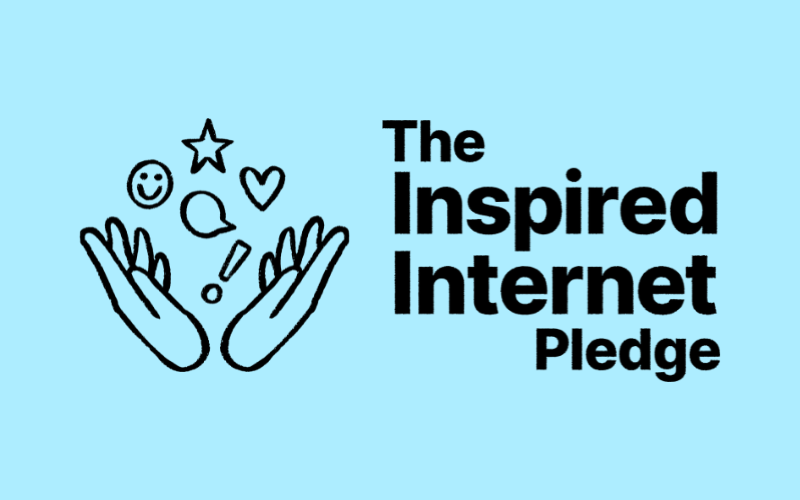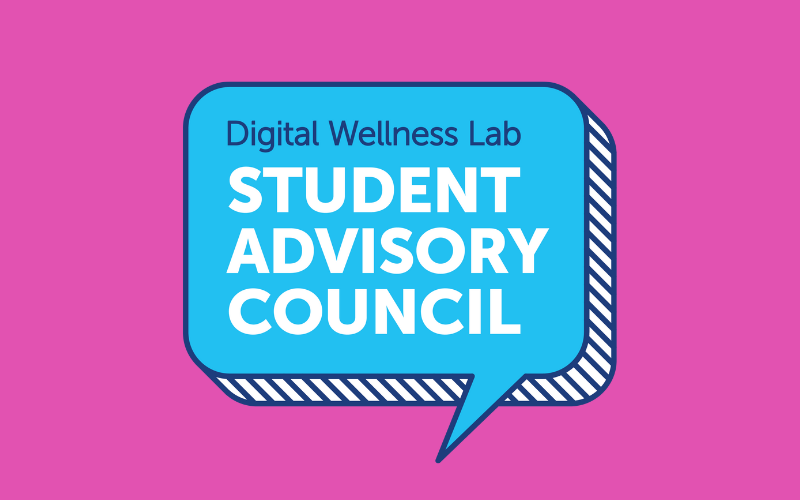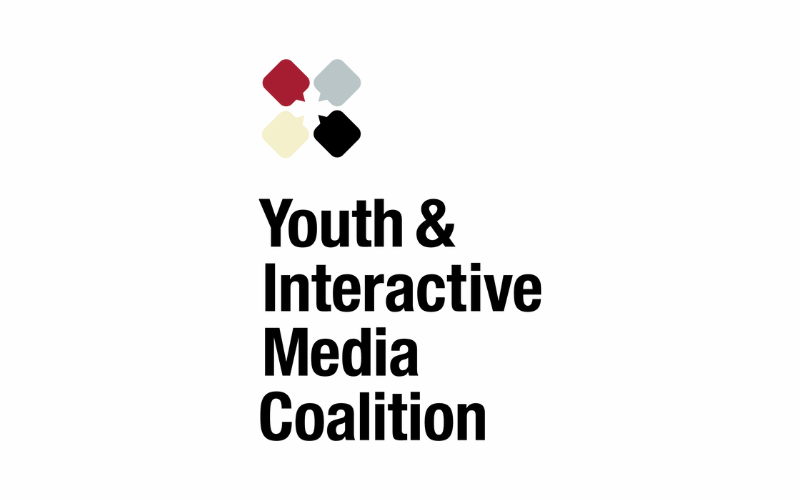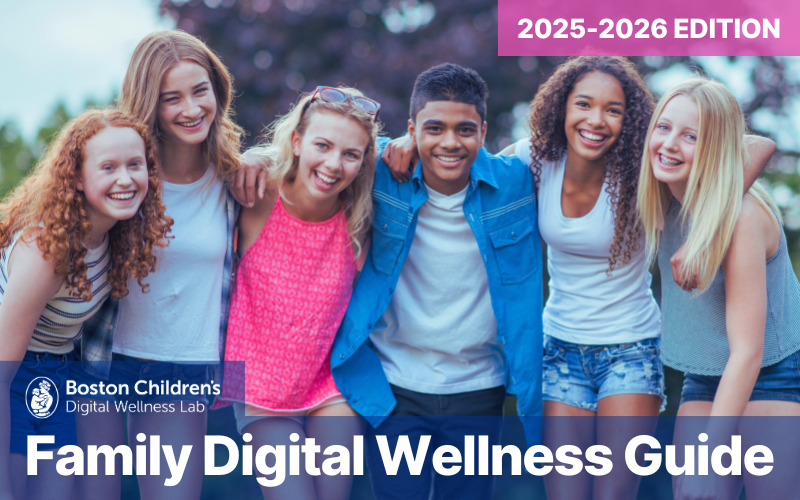Family Digital Wellness Guide
Welcome

A guide for helping kids build healthy and safe digital habits
Digital technology has become woven into the fabric of childhood and family life. From toddlers watching educational videos to teens navigating social media, technology offers unprecedented opportunities for learning, creativity, and connection. Yet it also presents new challenges that require thoughtful navigation.
Recent research, including testimony from the American Psychological Association to Congress, highlights both the promise and the risks of our digital age. While digital media and technology, including AI, can enhance learning and expand access to information, they can also disrupt healthy development when used without appropriate guidance—particularly for children whose brains are still developing the skills needed for critical thinking and self-regulation.
This guide recognizes that completely avoiding technology isn’t realistic for most families, nor is it necessary. Instead, we focus on helping you use digital tools in ways that support your child’s development, strengthen family bonds, and build healthy habits that will serve them throughout their lives.
Our approach is grounded in developmental science and organized around five key principles—the 5 M’s of Digital Wellness: Model, Mentor, Monitor, Mastery, and Meaning. These principles acknowledge that children of different ages have different needs, capabilities, and vulnerabilities when it comes to technology use.
For young children, this means prioritizing human interaction and co-viewing experiences that strengthen rather than replace real-world connections. For school-age children, it involves building critical thinking skills and establishing healthy boundaries as they gain independence. For teens and young adults, it means fostering open communication and supporting their development of self-regulation skills while remaining available as a trusted guide.
Throughout this guide, you’ll find age-specific recommendations based on what research tells us about child development, along with practical strategies for common challenges like cyberbullying, screen time management, and media literacy.
The goal isn’t to eliminate screens from your family’s life, but to help you use them intentionally—in ways that reflect your values, support your child’s wellbeing, and prepare them to navigate an increasingly digital world with wisdom and confidence.
Remember: you are your child’s most important teacher when it comes to digital wellness. By staying engaged, informed, and responsive to their changing needs, you can help them develop a healthy, balanced relationship with technology that will benefit them for years to come.
About the Digital Wellness Lab
The Digital Wellness Lab at Boston Children’s Hospital and Harvard Medical School seeks to understand and promote positive and healthy digital media experiences for young people, from birth through young adulthood.
We conduct rigorous, independent research on how technology affects children’s development and wellbeing, then translate our findings into actionable insights for families, healthcare providers, and the tech industry. We are particularly focused on understanding the effects of social media, video games, and artificial intelligence—the technologies most used by youth and most likely to have significant impacts on their wellbeing and development. Learn more about our mission and how we create impact →
Ultimately, our vision is an empathetic and respectful world in which kids can grow up healthy, smart, and kind.
How to Use This Guide
This Digital Wellness Guide is designed to provide parents and caregivers with information and guidance based on clinical evidence and scientific research. In it, we discuss both the benefits and risks of digital media use and provide recommendations for navigating and supporting healthy media use by children from birth through young adulthood.
If you are a pediatrician, mental health professional, educator, or are otherwise engaged with families looking for information and best practices, we encourage you to share this guide with parents and caregivers.
To best use this guide, consider:
Typical child development occurs at different rates in different children, even in the same family.
You know your children better than anyone as the individuals they are. What’s most important is your child’s developmental readiness. Some four year olds may be emotionally mature enough to engage in conversations about difficult topics. Some teens may not yet be ready for full independence. Both are variations of typical human development. We recommend that you start with your child’s group based on age, but, if recommendations don’t ring true for your child’s readiness, read up or down as needed.
A young person’s digital wellness is influenced by factors far beyond their screen time
Culture, values, self-esteem, and health diagnoses like ADHD or anxiety, are some of the many elements in a young person’s life that will affect how they engage with the digital world and how that engagement affects them. When reading through research evidence and practical strategies, it’s important to consider how they might need to be adapted for your child’s and your family’s needs.
NOTE: Throughout this guide, we use words like parent, caregiver, and family interchangeably to refer to the adults who are most influential in a child’s upbringing and daily life.
If You Believe Your Child Has a Problem with Digital Media Use
While most young people are able to use digital media in healthy and productive ways, some find themselves unable to regulate their use to a point that it becomes severely detrimental to their mental, physical, and/or social health. We refer to this as Problematic Interactive Media Use (PIMU). If you believe that your child suffers from PIMU, please contact the Boston Children’s Hospital Clinic on Interactive Media and Internet Disorders (CIMAID) to explore care options.

